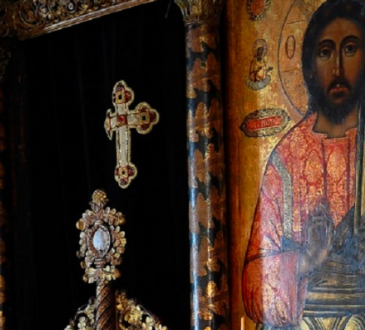The Timeless Beautiful Church Music: A Symphony of Faith and Artistry
Church music has been an integral part of religious worship for centuries, enriching spiritual experiences and fostering a sense of community among believers. The beauty of church music transcends time and cultural boundaries, with a rich history that has evolved to embrace diverse genres and styles. In this exploration, we delve into the mesmerizing world of beautiful church music, uncovering its historical roots, the evolution of styles, and its profound impact on congregations worldwide.
Contents
The Historical Tapestry:

A. Gregorian Chant – The Ancient Harmony: The earliest form of church music, Gregorian chant, emerged in the medieval Catholic Church. Named after Pope Gregory I, this monophonic, unaccompanied singing laid the foundation for Western musical tradition. The hauntingly beautiful melodies of Gregorian chant were designed to enhance the sacred atmosphere of worship, creating an ethereal connection between the divine and the earthly.
B. Renaissance Polyphony – A Flourish of Complexity: As the Renaissance dawned, church music shifted towards polyphony, characterized by multiple independent vocal lines. Composers like Palestrina and Josquin des Prez crafted intricate harmonies that added a layer of complexity and beauty to the liturgy. The interplay of voices became a symbol of the unity of faith, illustrating a musical tapestry that mirrored the diversity within religious congregations.
Baroque Brilliance:
A. Bach’s Masterpieces – A Gift to the Divine: The Baroque period ushered in a new era of expressive church music, and Johann Sebastian Bach stands as a towering figure in this realm. His sacred compositions, such as the Mass in B Minor and the St. Matthew Passion, showcased unparalleled craftsmanship and emotional depth. Bach’s music seamlessly blended the theological with the aesthetic, offering a transcendent experience to congregants.
B. Handel’s Messiah – A Triumph of Redemption: George Frideric Handel’s “Messiah” is a testament to the power of beautiful church music to convey the narrative of salvation. Composed in the oratorio style, this masterpiece narrates the life, death, and resurrection of Jesus Christ. The “Hallelujah” chorus, in particular, has become an iconic moment, evoking a sense of triumph and exultation that resonates through the ages.
The Romantic Era:

A. Mendelssohn’s Elijah – A Romantic Vision: The Romantic era brought a surge of emotional expression to church music. Felix Mendelssohn’s “Elijah” is a prime example, blending grandeur and intimacy in its depiction of the biblical prophet. The composer’s use of orchestral color and dynamic contrasts elevated the narrative’s emotional impact, making it a beloved work in the choral repertoire.
B. Fauré’s Requiem – A Gentle Repose: Gabriel Fauré’s Requiem, though not originally conceived for liturgical use, has found a significant place in church settings. Its serene and comforting melodies offer solace in mourning, reflecting a more introspective and contemplative approach to faith. Fauré’s composition demonstrates the ability of church music to evolve and adapt to the changing needs of congregations.
Twentieth Century and Beyond:
A. Contemporary Worship Music – A Global Tapestry: In recent decades, the landscape of church music has expanded to include a myriad of contemporary styles. From gospel and Christian rock to praise and worship anthems, these genres cater to diverse congregations seeking a modern expression of faith. Artists like Hillsong United and Chris Tomlin have become synonymous with the contemporary worship movement, connecting believers across the globe through their resonant compositions.
B. The Ecumenical Movement – Unity in Diversity: The ecumenical movement has further enriched the world of church music, fostering collaboration among diverse Christian traditions. Ecumenical choirs and musical festivals celebrate the shared heritage of hymns and liturgical music, promoting unity among believers regardless of denominational differences.
The Influence of Cultural Diversity:

A. Global Perspectives – Hymns and Beyond The spread of Christianity across continents has led to the integration of diverse cultural elements into church music. Hymns, in particular, have been adapted to reflect regional musical traditions, incorporating instruments, rhythms, and languages unique to different cultures. This synthesis of diverse influences contributes to a rich tapestry of global worship, emphasizing the universality of the Christian message.
B. Gospel Music – A Spirited Expression: Originating in African American churches, gospel music has become a vibrant and influential genre within the broader landscape of church music. Characterized by its soulful melodies, powerful vocal performances, and rhythmic vitality, gospel music has transcended the walls of churches, impacting popular music and culture. Its infectious energy adds a celebratory dimension to worship, inviting congregants to actively participate in the joyous expression of faith.
Conclusion:
The beauty of church music lies in its ability to evoke the sacred, bridging the gap between the divine and the human experience. From the ancient chants of medieval monasteries to the contemporary anthems resonating in megachurches, church music continues to be a source of inspiration, solace, and communal identity. As we reflect on the historical tapestry and the evolution of styles, we find that the essence of beautiful church music remains timeless – a symphony of faith and artistry that transcends the boundaries of time and culture, echoing the eternal connection between the earthly and the divine.



